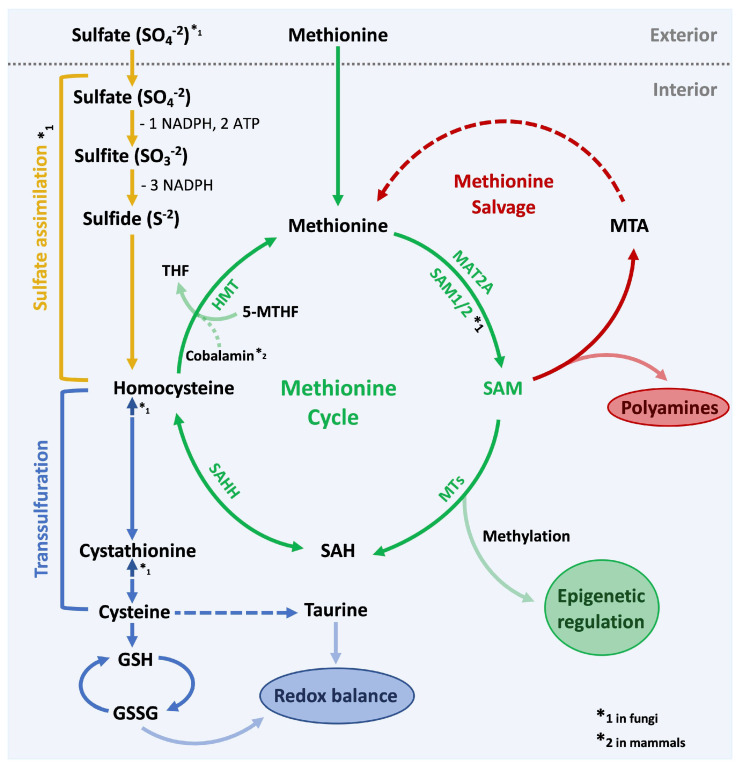Figure 1.
Methionine metabolism. Overview of the methionine cycle and other tightly coupled metabolic pathways. In green the methionine cycle, which quickly converts methionine to S-Adenosylmethionine (SAM) to generate methylation potential for the cell. Enzymes in the methionine cycle: MAT2A (methionine adenosyl transferase), SAM1/2 (SAM synthetase), Methyltransferases (MTs), SAHH (SAH hydrolase), HMT (Homocysteine methyltransferase). SAM is the primary methyl-group donor and is required for epigenetic regulation and other methylation-controlled processes. In red the methionine salvage pathway: SAM is also required for the synthesis of polyamines. Byproducts of this pathway are recycled to regenerate methionine. In blue the transsulfuration pathway: Homocysteine is converted to cysteine, which feeds into the generation of glutathione (GSH) and taurine to maintain the redox balance in the cell. In yellow the sulfate assimilation pathway: Most fungi are able to generate methionine from absorbed sulfate. This process is energy demanding and consumes 2 ATP and 4 NADPH molecules per one molecule of methionine.

